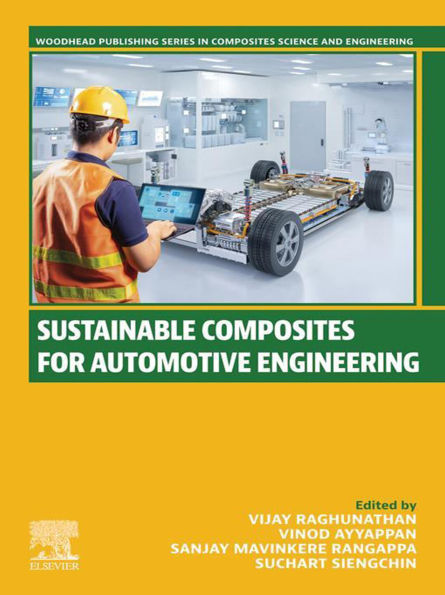Sustainable Composites for Automotive Engineering presents recent trends in this important research field. Emphasis is placed on the development, characterization, and application of lightweight composites in various automobile components. The types of materials covered include polymer composites, metal matrix and ceramic matrix composites. The book takes a 360-degree approach and covers all aspects of the product development cycle including materials selection, as well as design and development processes, testing, characterization, modelling and simulation, and applications. The book will be a valuable reference resource for academic and industrial researchers, materials scientists and engineers, industrial R&D, automotive engineers, and manufacturers working in the design and development of composite materials for applications in automotive components. - Provides in-depth knowledge about the materials, their properties and performance, and applications in automotive components - Covers polymer matrix composites, ceramic-matrix and metal-based composites - Discusses traditional manufacturing methods and recent developments in sustainable 'green' manufacturing and testing of automobile parts with various industrial case studies - Includes brake friction materials, as well as natural and rubber-based composites - Covers OEM regulations, environmental aspects, economic analysis, and life cycle assessment of composite-based products
1145804520
Sustainable Composites for Automotive Engineering
Sustainable Composites for Automotive Engineering presents recent trends in this important research field. Emphasis is placed on the development, characterization, and application of lightweight composites in various automobile components. The types of materials covered include polymer composites, metal matrix and ceramic matrix composites. The book takes a 360-degree approach and covers all aspects of the product development cycle including materials selection, as well as design and development processes, testing, characterization, modelling and simulation, and applications. The book will be a valuable reference resource for academic and industrial researchers, materials scientists and engineers, industrial R&D, automotive engineers, and manufacturers working in the design and development of composite materials for applications in automotive components. - Provides in-depth knowledge about the materials, their properties and performance, and applications in automotive components - Covers polymer matrix composites, ceramic-matrix and metal-based composites - Discusses traditional manufacturing methods and recent developments in sustainable 'green' manufacturing and testing of automobile parts with various industrial case studies - Includes brake friction materials, as well as natural and rubber-based composites - Covers OEM regulations, environmental aspects, economic analysis, and life cycle assessment of composite-based products
359.99
In Stock
5
1

Sustainable Composites for Automotive Engineering
900
Sustainable Composites for Automotive Engineering
900Related collections and offers
359.99
In Stock

Product Details
| ISBN-13: | 9780443236709 |
|---|---|
| Publisher: | Woodhead Publishing, Limited |
| Publication date: | 09/01/2025 |
| Series: | Woodhead Publishing Series in Composites Science and Engineering |
| Sold by: | Barnes & Noble |
| Format: | eBook |
| Pages: | 900 |
| File size: | 41 MB |
| Note: | This product may take a few minutes to download. |
About the Author
From the B&N Reads Blog
